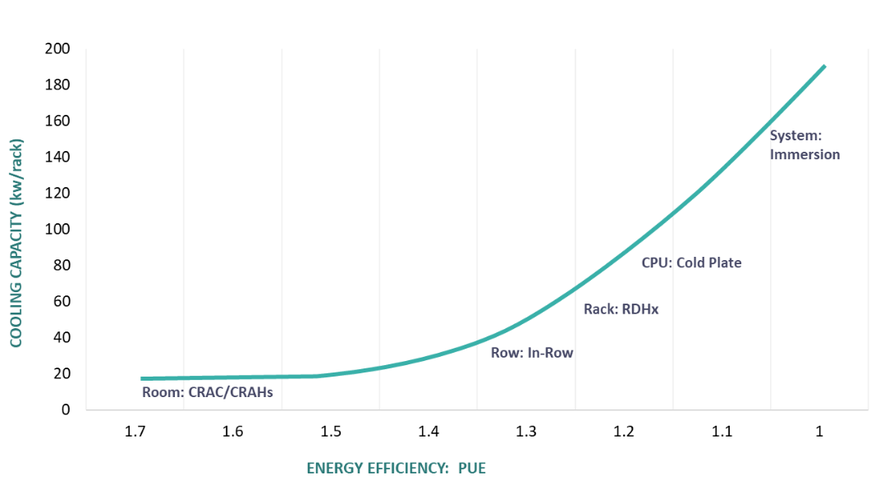Are CIOs the martyrs of the information economy? Remember when the IT leader just needed to worry about IT? The CIO of today is constantly challenged to balance conflicting business critical priorities. In the pursuit of business opportunities afforded by new applications driven by IoT, AI, ML, and other commercial high performance computing, IT costs can quickly escalate.
These power hungry applications increase the complexity and cost of data center design and operations, as traditional air-cooled designs struggle to keep up with the increases in IT density. Yet, their CEOs and CFOs want them to reduce IT costs. To reduce costs, excess data center capacity is being sold off, or decommissioned, reducing IT responsiveness to new business opportunities that require IT resources. The cloud gives them more flex capacity, but exposes them to other risks like security breaches or downtime.
The data center infrastructure industry, once a relatively stable and monolithic industry, has seen an increasingly rapid rate of innovation over the past few years, in a race to keep up with new demands. In the early 2000s, the introduction of In-Row cooling and hot aisle/cold aisle containment strategies was the start of a string of innovations in data center cooling. It was followed by rear-door heat exchangers, which brought liquid into the data center. Then liquid came to the chip bringing the exceptional heat transfer capabilities of liquid directly to the processors on the motherboard. These innovations brought lower PUEs and the resultant energy cost savings, and increased rack power densities that improved space utilization enabling adoption of innovative high density hardware.
Continuing the march to lower PUEs and support for increasing rack densities, the next wave of innovation has been immersion cooling. With nearly a decade of successful deployments in commercial, academic, and national defense data centers, the technology is now very mature. The mechanical load for this type of cooling is less than 3 percent of the IT load, and it has already been deployed with rack densities up to 130 kW per rack. Immersion cooling does more than advance up this PUE/Rack Density curve by addressing two of the biggest challenges IT organizations face, today – cost and complexity.
Without the need for chillers, raised floors, hot aisle/cold aisle containment, humidity controls, or specialized building design and engineering, data center construction costs are slashed, only requiring a floor and roof to get started. Further, due to energy efficiencies, power and backup infrastructure including generators and UPSs can be downsized in proportion to the peak load reduction. Real estate costs can also be reduced through improved space utilization, supporting up to 200 kW per rack and without the need for hot and cold aisles, allowing racks to be fully populated and put back to back.
Apart from the upfront CAPEX savings of building a new data center with immersion, there are a number of ongoing OPEX savings as well. In terms of energy costs, immersion offers unmatched efficiency with the whole cooling infrastructure consuming less power than just the server fans that are removed. The grossly simplified infrastructure uses only three moving parts meaning that there are minimal points of failure and yield a lower cost of operations and maintenance.
Another key area of savings that is often left out of TCO calculations is the cost of refreshing hardware. Data center infrastructure is designed to last over 15 years, and sees 3-5 generations of hardware. Traditional air cooling infrastructure can become a bottleneck for the adoption of new hardware as densities continue to rise and, technologies like liquid to the chip can add substantial costs and complexity since critical pieces of the cooling infrastructure are plumbed into the hardware itself. Immersion cooling on the other hand is not just designed to last the life of a data center, it helps future proof it by offering nearly limitless cooling capacity that is compatible with rising hardware densities.
The closed loop system can be implemented in almost any environment, giving you increased location flexibility and without the need for whitespace. All that is needed to set up an immersion cooling system are connections to power and networking. With the ability to expand in weeks, versus months on tradition systems, capacity planning can be simplified eliminating the need for over-provisioning. The limitless nature of the cooling capacity makes IT refresh cycles quick and effortless. In short, with immersion cooling IT can focus on IT, and stop worrying about the infrastructure required to support it.
Peter Poulin is CEO of Green Revolution Cooling



